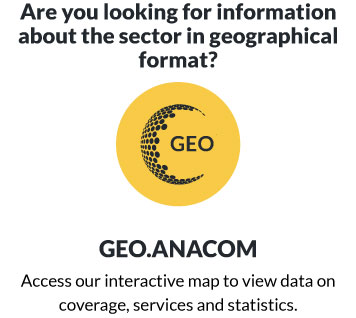Commission Recommendation
of 11 February 2003
on relevant product and service markets within the electronic communications sector susceptible to ex ante regulation in accordance with Directive 2002/21/EC of the European Parliament and of the Council on a common regulatory framework for electronic communication networks and services
(notified under document number C(2003) 497)
(Text with EEA relevance)
(2003/311/EC)
THE COMMISSION OF THE EUROPEAN COMMUNITIES,
Having regard to the Treaty establishing the European Community,
Having regard to Directive 2002/21/EC of the European Parliament and of the Council on a common regulatory framework for electronic communication networks and services (1), and in particular Article 15 thereof,
Whereas:
(1) Directive 2002/21/EC (hereinafter the Framework Directive), establishes a new legislative framework for the electronic communications sector that seeks to respond to convergence trends by covering all electronic communications networks and services within its scope The aim is to reduce ex ante sector-specific rules progressively as competition in the market develops.
(2) The purpose of this Recommendation is to identify those product and service markets in which ex ante regulation may be warranted. However, this first Recommendation has to be consistent with the transition from the 1998 regulatory framework to the new regulatory framework. Directive 2002/19/EC of the European Parliament and of the Council on access to, and interconnection of, electronic communications networks and associated facilities (2), hereinafter the Access Directive, and Directive 2002/22/EC of the European Parliament and of the Council on universal service and users' rights relating to electronic communications networks and services (3) hereinafter the Universal service Directive already identify specific market areas which need to be analysed by national regulatory authorities in addition to the markets listed in this Recommendation. In accordance with the Framework Directive, it is for national regulatory authorities to define relevant geographic markets within their territory.
(3) Under the 1998 regulatory framework, several areas in the telecommunications sector are subject to ex ante regulation. These areas have been delineated in the applicable directives, but are not always "markets" within the meaning of competition law and practice. Annex I of the Framework Directive provides a list of such market areas to be included in the initial version of the Recommendation.
(4) As the title of Annex I of the Framework Directive makes clear, all the market areas listed therein need to be included in the initial version of the Recommendation in order that NRAs can carry out a review of existing obligations imposed under the 1998 regulatory framework.
(5) Article 15(1) of the Framework Directive requires the Commission to define markets in accordance with the principles of competition law. The Commission has therefore defined markets (corresponding to the market areas listed in Annex I of the Framework Directive) in accordance with competition law principles.
(6) There are in the electronic communications sector at least two main types of relevant markets to consider: markets for services or products provided to end users (retail markets), and markets for the inputs which are necessary for operators to provide services and products to end users (wholesale markets). Within these two types of markets, further market distinctions may be made depending on demand and supply side characteristics.
(7) The starting point for the definition and identification of markets is a characterisation of retail markets over a given time horizon, taking into account demand-side and supply-side substitutability. Having characterised and defined retail markets which are markets involving the supply and demand of end users, it is then appropriate to identify relevant wholesale markets which are markets involving the demand of products of, and supply of products to, a third party wishing to supply end users.
(8) Defining markets in accordance with the principles of competition law means that some of the market areas in Annex I of the Framework Directive comprise a number of separate individual markets on the basis of demand side characteristics. This is the case of products for retail access to the public telephone network at a fixed location and for telephone services provided at a fixed location. The market area in Annex I referring to wholesale leased lines is defined as separate markets for wholesale terminating segments and wholesale trunk segments on the basis of both demand side and supply side characteristics.
(9) In identifying markets in accordance with competition law principles, recourse should be had to the following three criteria. The first criterion is the presence of high and non-transitory entry barriers whether of structural, legal or regulatory nature. However, given the dynamic character and functioning of electronic communications markets, possibilities to overcome barriers within a relevant time horizon have also to be taken into consideration when carrying out a prospective analysis to identify the relevant markets for possible ex ante regulation. Therefore the second criterion admits only those markets the structure of which does not tend towards effective competition within the relevant time horizon. The application of this criterion involves examining the state of competition behind the barriers of entry. The third criterion is that application of competition law alone would not adequately address the market failure(s) concerned.
(10) In particular, as far as entry barriers are concerned, two types of entry barriers are relevant for the purpose of this Recommendation: structural barriers and legal or regulatory barriers.
(11) Structural barriers to entry result from original cost or demand conditions that create asymmetric conditions between incumbents and new entrants impeding or preventing market entry of the latter. For instance, high structural barriers may be found to exist when the market is characterised by substantial economies of scale and/or economies of scope and high sunk cost. To date, such barriers can still be identified with respect to the widespread deployment and/or provision of local access networks to fixed locations. A related structural barrier can also exist where the provision of service requires a network component that cannot be technically duplicated or only duplicated at a cost that makes it uneconomic for competitors.
(12) Legal or regulatory barriers are not based on economic conditions, but result from legislative, administrative or other state measures that have a direct effect on the conditions of entry and/or the positioning of operators on the relevant market. Examples are legal or regulatory barriers preventing entry into a market where there is a limit on the number of undertakings that have access to spectrum for the provision of underlying services. Other examples of legal or regulatory barriers are price controls or other price related measures imposed on undertakings, which affect not only entry but also the positioning of undertakings on the market.
(13) Entry barriers may also become less relevant with regard to innovation-driven markets characterised by ongoing technological progress. In such markets, competitive constraints often come from innovative threats from potential competitors that are not currently in the market. In such innovation-driven markets, dynamic or longer term competition can take place among firms that are not necessarily competitors in an existing "static" market. This Recommendation does not identify markets where entry barriers are not expected to persist over a foreseeable period.
(14) Even when a market is characterised by high barriers to entry, other structural factors in that market may mean that the market tends towards an effectively competitive outcome within the relevant time horizon. This may for instance be the case in markets with a limited, but sufficient, number of undertakings having diverging cost structures and facing price-elastic market demand. There may also be excess capacity in a market that would allow rival firms to expand output very rapidly in response to any price increase. In such markets, market shares may change over time and/or falling prices may be observed.
(15) The decision to identify a market as justifying possible ex ante regulation should also depend on an assessment of the sufficiency of competition law in reducing or removing such barriers or in restoring effective competition. Furthermore, new and emerging markets, in which market power may be found to exist because of "first-mover" advantages, should not in principle be subject to ex-ante regulation.
(16) In undertaking periodic reviews of the markets identified in this Recommendation, the three criteria should be used. These criteria should be applied cumulatively, so that failing any one of them means that the market should not be identified in subsequent recommendations. Thus, whether an electronic communications market continues to be identified by subsequent versions of the Recommendation as justifying possible ex ante regulation would depend on the persistence of high entry barriers, on the second criterion measuring the dynamic state of competitiveness and thirdly on the sufficiency of competition law (absent ex ante regulation) to address persistent market failures. A market could also be removed from a recommendation once there is evidence of sustainable and effective competition on that market within the Community, provided that the removal of existing regulation obligations would not reduce competition on that market.
(17) The Annex to this Recommendation indicates how each market in the Recommendation is linked to the market areas in Annex I to the Framework Directive. When reviewing existing obligations imposed under the previous regulatory framework, in order to determine whether to maintain, amend or withdraw them, NRAs should undertake the analysis on the basis of the markets identified in this Recommendation, in order to give effect to the requirement that market definition for the purposes of ex ante regulation should be based on competition law principles. Pending the first market analysis by NRAs under the new regulatory framework, existing obligations remain in force.
(18) The identification of markets in this Recommendation is without prejudice to markets that may be defined in specific cases under competition law.
(19) The range of different network topologies and technologies deployed across the Community means that in some cases national regulatory authorities must decide the precise boundaries between, or elements within, particular markets identified in the Recommendation, while adhering to competition law principles. National regulatory authorities may identify markets that differ from those of the Recommendation, provided they act in accordance with Article 7 of the Framework Directive. Since the imposition of ex ante regulation on a market could affect trade between Member States as described in recital 38 of the Framework Directive, the Commission considers that the identification of any market that differs from those of the Recommendation are likely to be subject to the appropriate procedure in Article 7 of the Framework Directive. Failure to notify a market which affects trade between Member States may result in infringement proceedings being taken. Any market identified by national regulatory authorities should be based on the competition principles developed in the Commission Notice on the definition of relevant market for the purposes of Community competition law (4), and be consistent with the Commission Guidelines on market analysis and the assessment of significant market power and satisfy the three criteria set out above. Should an NRA consider that demand and supply patterns may justify an alternative market definition of a market listed in this Recommendation, it should then follow the appropriate procedures set out in Article 6 and 7 of the Framework Directive.
(20) The fact that this Recommendation identifies those product and service markets in which ex ante regulation may be warranted does not mean that regulation is always warranted or that these markets will be subject to the imposition of regulatory obligations set out in the specific Directives. Regulation will not be warranted if there is effective competition on these markets. In particular, regulatory obligations must be appropriate and be based on the nature of the problem identified, proportionate and justified in the light of the objectives laid down in the Framework Directive, in particular maximising benefits for users, ensuring no distortion or restriction of competition, encouraging efficient investment in infrastructure and promoting innovation, and encouraging efficient use and management of radio frequencies and numbering resources.
(21) The Commission will review the need for any update of this Recommendation no later than 30 June 2004 on the basis of market developments.
(22) This Recommendation has been subject to a public consultation and to consultation with national regulatory authorities and national competition authorities.
HAS ADOPTED THIS RECOMMENDATION:
1. In defining relevant markets in accordance with Article 15(3) of Directive 2002/21/EC, national regulatory authorities are recommended to analyse the product and service markets identified in the Annex.
2. This Recommendation is addressed to the Member States.
Done at Brussels, 11 February 2003.
For the Commission
Erkki Liikanen
Member of the Commission
ANNEX
Retail level
1. Access to the public telephone network at a fixed location for residential customers.
2. Access to the public telephone network at a fixed location for non-residential customers.
3. Publicly available local and/or national telephone services provided at a fixed location for residential customers.
4. Publicly available international telephone services provided at a fixed location for residential customers.
5. Publicly available local and/or national telephone services provided at a fixed location for non-residential customers.
6. Publicly available international telephone services provided at a fixed location for non-residential customers.
These six markets are identified for the purpose of analysis in respect of Article 17 of the Universal Service Directive.
Together, markets 1 through 6 correspond to "the provision of connection to and use of the public telephone network at fixed locations", referred to in Annex I(1) of the Framework Directive. This combined market is also referred to in Article 19 of the Universal Service Directive (for possible imposition of carrier call-by-call selection or carrier selection).
7. The minimum set of leased lines (which comprises the specified types of leased lines up to and including 2Mb/sec as referenced in Article 18 and Annex VII of the Universal Service Directive).
This market is referred to in Annex I(1) of the Framework Directive in respect of Article 16 of the Universal Service Directive (the provision of leased lines to end users).
A market analysis must be undertaken for the purposes of Article 18 of the Universal Service Directive which covers regulatory controls on the provision of the minimum set of leased lines.
Wholesale level
8. Call origination on the public telephone network provided at a fixed location. For the purposes of this Recommendation, call origination is taken to include local call conveyance and delineated in such a way as to be consistent with the delineated boundaries for the markets for call transit and for call termination on the public telephone network provided at a fixed location.
This market corresponds to that referred to in Annex I(2) of the Framework Directive in respect of Directive 97/33/EC (call origination in the fixed public telephone network).
9. Call termination on individual public telephone networks provided at a fixed location.
For the purposes of this Recommendation, call termination is taken to include local call conveyance and delineated in such a way as to be consistent with the delineated boundaries for the markets for call origination and for call transit on the public telephone network provided at a fixed location.
This market corresponds to the one referred to in Annex I(2) of the Framework Directive in respect of Directive 97/33/EC (call termination in the fixed public telephone network).
10. Transit services in the fixed public telephone network.
For the purposes of this Recommendation, transit services are taken as being delineated in such a way as to be consistent with the delineated boundaries for the markets for call origination and for call termination on the public telephone network provided at a fixed location.
This market corresponds to the one referred to in Annex I(2) of the Framework Directive in respect of Directive 97/33/EC (transit services in the fixed public telephone network).
11. Wholesale unbundled access (including shared access) to metallic loops and sub-loops for the purpose of providing broadband and voice services.
This market corresponds to that referred to in Annex I(2) of the Framework Directive inrespect of Directive 97/33/EC and Directive 98/10/EC (access to the fixed public telephone network, including unbundled access to the local loop) and to that referred to in Annex I (3) of the Framework Directive in respect of Regulation No 2887/2000.
12. Wholesale broadband access.
This market covers "bit-stream" access that permit the transmission of broadband data in both directions and other wholesale access provided over other infrastructures, if and when they offer facilities equivalent to bit-stream access. It includes "Network access and special network access" referred to in Annex I(2) of the Framework Directive, but does not cover the market in point 11 above, nor the market in point 18.
13. Wholesale terminating segments of leased lines.
14. Wholesale trunk segments of leased lines.
Together, the wholesale markets 13 and 14 correspond to those referred to in Annex I(2) of the Framework Directive in respect of Directive 97/33/EC and Directive 98/10/EC (leased line interconnection) and to those referred to in Annex I(2) of the Framework Directive in respect of Directive 92/44/EEC (wholesale provision of leased line capacity to other suppliers of electronic communications networks or services).
15. Access and call origination on public mobile telephone networks, referred to (separately) in Annex I(2) of the Framework Directive in respect of Directives 97/33/EC and 98/10/EC.
16. Voice call termination on individual mobile networks.
This market corresponds to the one referred to in Annex I(2) of the Framework Directive in respect of Directive 97/33/EC (call termination on public mobile telephone networks).
17. The wholesale national market for international roaming on public mobile networks.
This market corresponds to the one referred to in Annex I(4) of the Framework Directive.
18. Broadcasting transmission services, to deliver broadcast content to end users.
Note
National regulatory authorities have discretion with respect to the analysis of the market for "Conditional access systems to digital television and radio services broadcast" in accordance with Article 6(3) of the Access Directive. Article 6(3) of the Access Directive provides that Member States may permit their NRAs to review the market for conditional access system to digital television and radio services broadcast, irrespective of the means of transmission.
Notes
Notes
Notes
Notes
1 OJ L 108, 24.4.2002, p. 33.
2 OJ L 108, 24.4.2002, p. 7.
3 OJ L 108, 24.4.2002, p. 51.
4 OJ C 372, 9.12.1997, p. 5.




